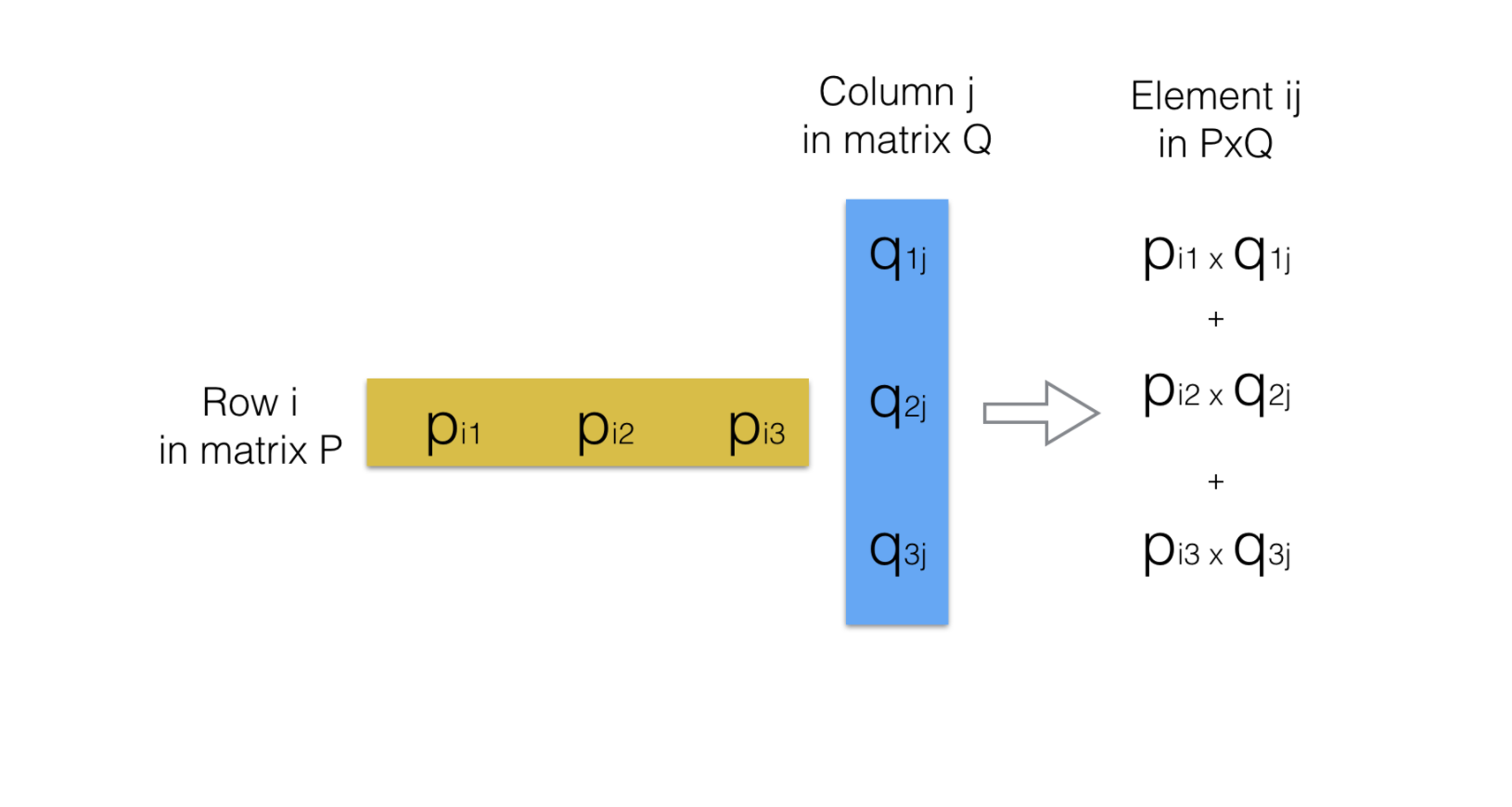07. Matrix Multiplication - General
So far we only concentrated on square matrix multiplications. However, we are not limited to square matrices alone.
Lets look again at our image that represents the multiplication P x Q:
Remember, the order here does matter, as matrix multiplication is not commutative

If you look closely at the image that represents the multiplication of P x Q, you will see that the number columns in P equals the number of rows in Q. (In the case of our example, it was 3 ).
How many rows do we have in matrix P? How many columns do we have in matrix Q? That will deretmine the dimensions of the resulting multiplication.
In other words, if P is a matrix with dimensions t x m and Q is a matrix with dimensions m x v then:
PxQ is possible as the dimensions match. (P has m columns and Q has m rows).
PxQ will be a matrix of txv. (t rows and v columns).
Lets look at an example:
P=\begin{bmatrix} p_{11} &p_{12} &p_{13}\\ p_{21} &p_{22} &p_{23}\end{bmatrix}
Q=\begin{bmatrix} q_{11} &q_{12}&q_{13}&q_{14}\\ q_{21} &q_{22}&q_{23}&q_{24} \\q_{31} &q_{32}&q_{33}&q_{34}\end{bmatrix}
We would like to calculate PxQ.
Our first step is to see if the calculation is possible. We will do that by looking at the dimensions of the matrices.
Matrix P has 3 columns and matrix Q has 3 rows. Perfect! multiplication is possible.
We expect to have a final result PxQ with the dimensions 2x4 (2 rows and 4 columns).
PxQ= \begin{bmatrix} p_{11}q_{11}+p_{12}q_{21}+p_{13}q_{31} &p_{11}q_{12}+p_{12}q_{22}+p_{13}q_{32} &p_{11}q_{13}+p_{12}q_{23}+p_{13}q_{33} &p_{11}q_{14}+p_{12}q_{24}+p_{13}q_{34}\\ p_{21}q_{11}+p_{22}q_{21}+p_{23}q_{31} &p_{21}q_{12}+p_{22}q_{22}+p_{23}q_{32} &p_{21}q_{13}+p_{22}q_{23}+p_{23}q_{33}&p_{21}q_{14}+p_{22}q_{24}+p_{23}q_{34}\end{bmatrix}
Equation 16